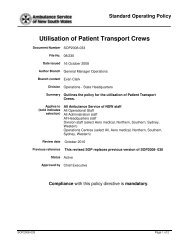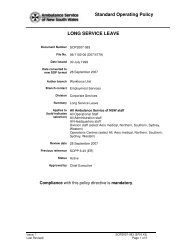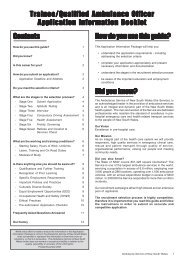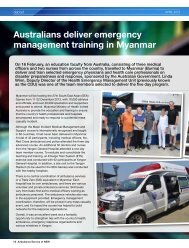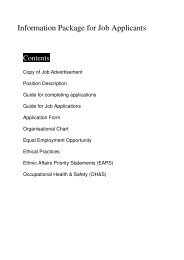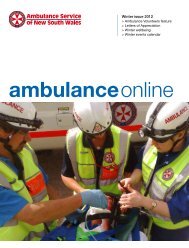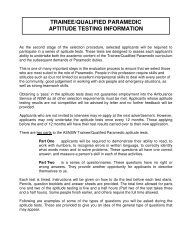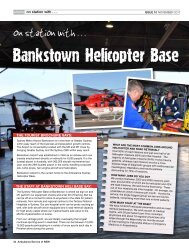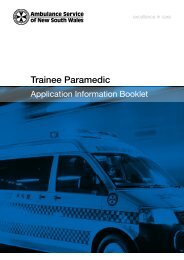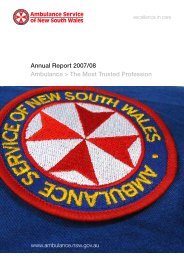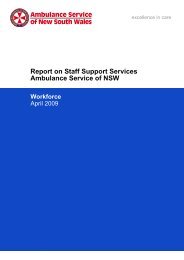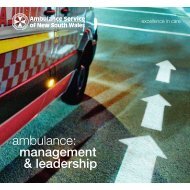atsb final report released 16 may 2013 - Ambulance Service of NSW
atsb final report released 16 may 2013 - Ambulance Service of NSW
atsb final report released 16 may 2013 - Ambulance Service of NSW
You also want an ePaper? Increase the reach of your titles
YUMPU automatically turns print PDFs into web optimized ePapers that Google loves.
SAFETY ACTIONThe safety issues identified during this investigation are listed in the Findings andSafety Actions sections <strong>of</strong> this <strong>report</strong>. The Australian Transport Safety Bureau(ATSB) expects that all safety issues identified by the investigation should beaddressed by the relevant organisation(s). In addressing those issues, the ATSBprefers to encourage relevant organisation(s) to proactively initiate safety action,rather than to issue formal safety recommendations or safety advisory notices.All <strong>of</strong> the responsible organisations for the safety issues identified during thisinvestigation were given a draft <strong>report</strong> and invited to provide submissions. As part<strong>of</strong> the process, each organisation was asked to communicate what safety actions, ifany, they had carried out or were planning to carry out in relation to each safetyissue relevant to their organisationSpecial casualty access team operating proceduresMinor safety issueThe accepted use <strong>of</strong> procedural adaptation by special casualty access teamparamedics, and the past success <strong>of</strong> rescues that involved adapted techniques,probably led to the retrieval procedure that was used on the night.Action taken by the <strong>Ambulance</strong> <strong>Service</strong> <strong>of</strong> New South WalesThe <strong>Ambulance</strong> <strong>Service</strong> <strong>of</strong> New South Wales (AS<strong>NSW</strong>) advised <strong>of</strong> the followingaction in response to this accident:• Flying staff instructions have been issued reinforcing that procedures must be inaccordance with the operations manual, and equipment used for its intendedpurpose.• Winching procedures have been reviewed and revised procedures, particularlyrelating to the position <strong>of</strong> the aircraft before attaching to the winch, have beenissued.• A mandatory winch review process has been introduced to ensure winchingmissions are conducted in accordance with procedures and to enable thedetection <strong>of</strong> issues and potential scope creep.• Cameras are being installed on helicopter rescue winches to facilitate trainingand mission review.• A special casualty access team (SCAT) educator position has been createdwithin the Special Operations Unit to focus on SCAT training development andcertification.Action taken by the operatorImmediately following the accident, the helicopter operator, with the agreement <strong>of</strong>AS<strong>NSW</strong>, verbally briefed all crews that ‘combined roping techniques’ were not tobe carried out. That was followed by the issue <strong>of</strong> a flying staff instruction on28 December 2011 that banned the use <strong>of</strong> such techniques. This ban remains inplace and has been incorporated into the operator’s operations manual.- 47 -



